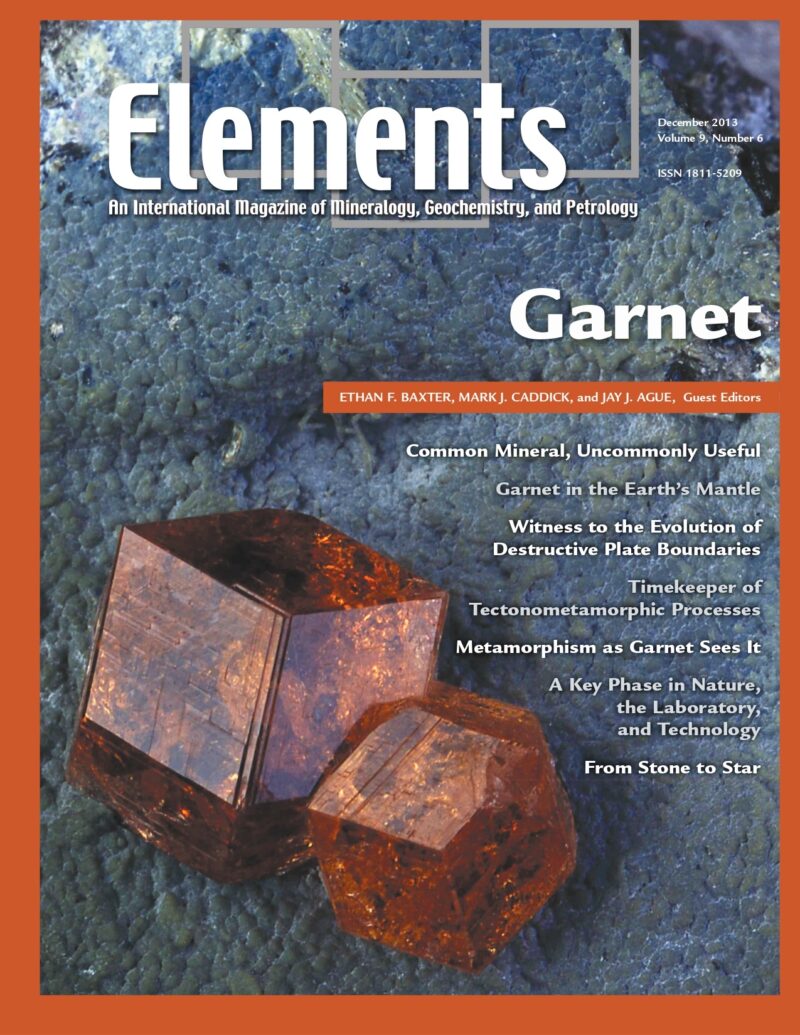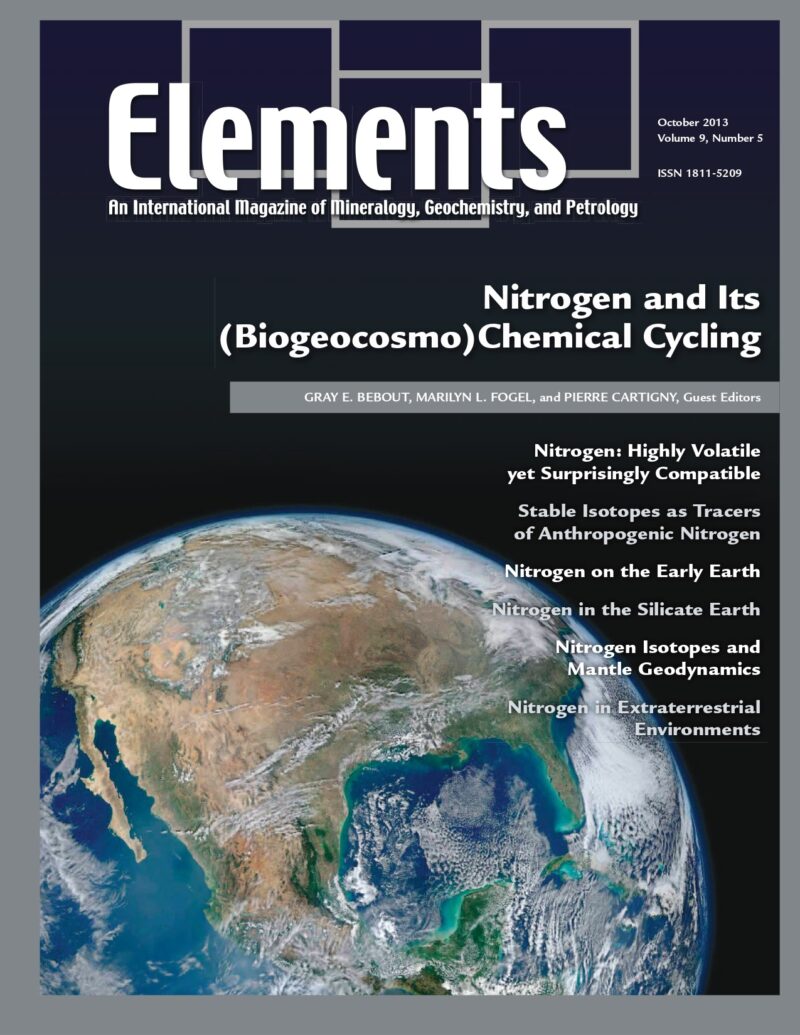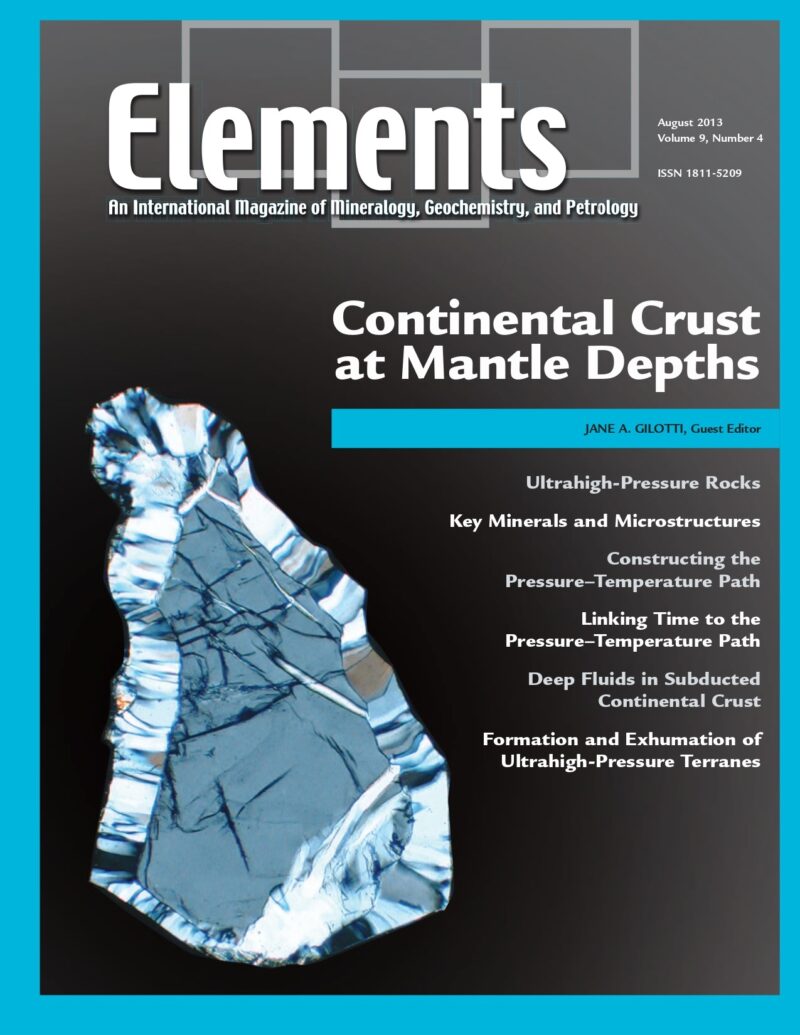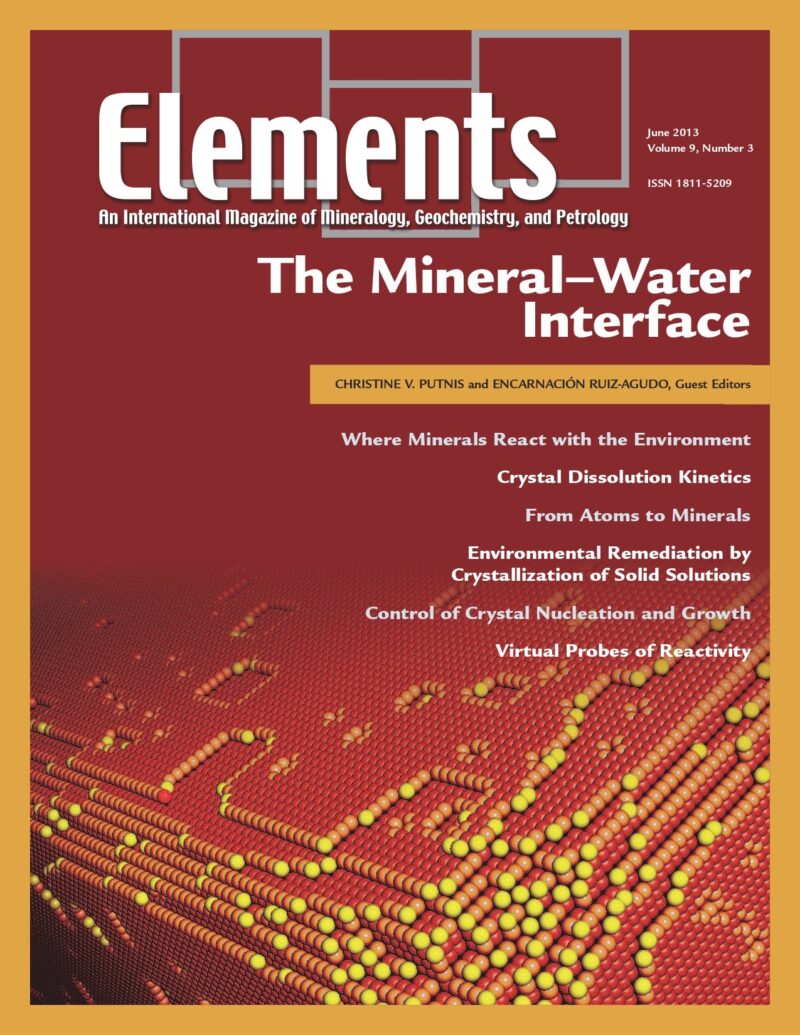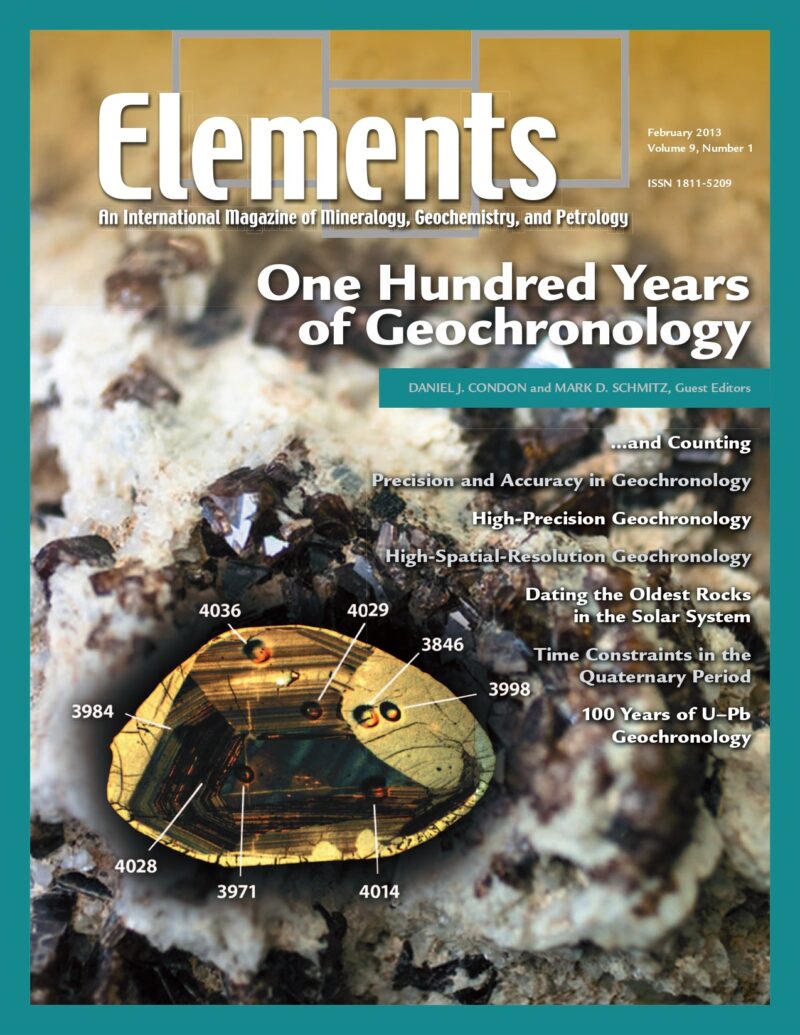-
Garnet, December 2013, Vol. 9, No. 6
$20.00Garnet is among the most studied—and most beloved—minerals, owing to its commonality in diverse geologic contexts, its often large euhedral crystals, its sometimes dazzling colors, and its propensity for preserving information about its growth history. Chemically zoned garnet represents a remarkable tool for deciphering metamorphic conditions and the evolving tectonic processes that drive garnet growth over many millions of years.
-
Nitrogen And Its (Biogeocosmo) Chemical Cycling, October 2013, Vol. 9, No. 5
$20.00Nitrogen is the most abundant element in Earth’s atmosphere and a key component of the biosphere. It is also a critical part of the surface/near-surface cycling of nutrients, thus directly impacting our lives.
-
Continental Crust At Mantle Depths, August 2013, Vol. 9, No. 4
$20.00The discovery of diamond and coesite in crustal rocks is compelling evidence that continental material has experienced pressures that can be achieved only at mantle depths. The classical idea that continents are too buoyant to subduct has given way to the notion of density changes driving deep subduction during the collision process, thus enabling some crust to be exhumed to the surface and the rest to sink into the mantle.
-
The Mineral–Water Interface, June 2013, Vol. 9, No. 3
$20.00Reactions occurring at mineral–water interfaces are central to geochemical processes. They affect a wide range of important environmental issues, such as the composition of natural waters, weathering and soil formation, element cycling, biomineralization (including minor-element incorporation), acid mine drainage, and nuclear waste disposal.
-
Serpentinites, April 2013, Vol. 9, No. 2
$20.00Serpentinites, primarily composed of serpentine minerals and formed by hydration of peridotites, increasingly attract the attention of a wide range of scientists, including geophysicists, structural geologists, engineers, and astrobiologists. As serpentinites have wide stability fields, they form in a variety of environments, from the Earth’s surface to the interior of the mantle.
-
One Hundred Years Of Isotope Geochronology, February 2013, Vol. 9, No. 1
$20.00In 1913, Frederick Soddy’s research on the fundamentals of radioactivity led to the discovery of “isotopes.” That same year, Arthur Holmes published his now famous booklet The Age of the Earth.

